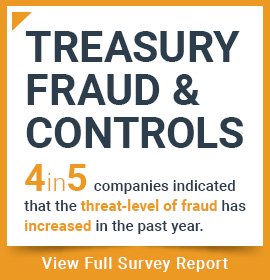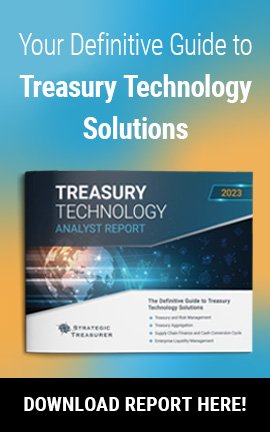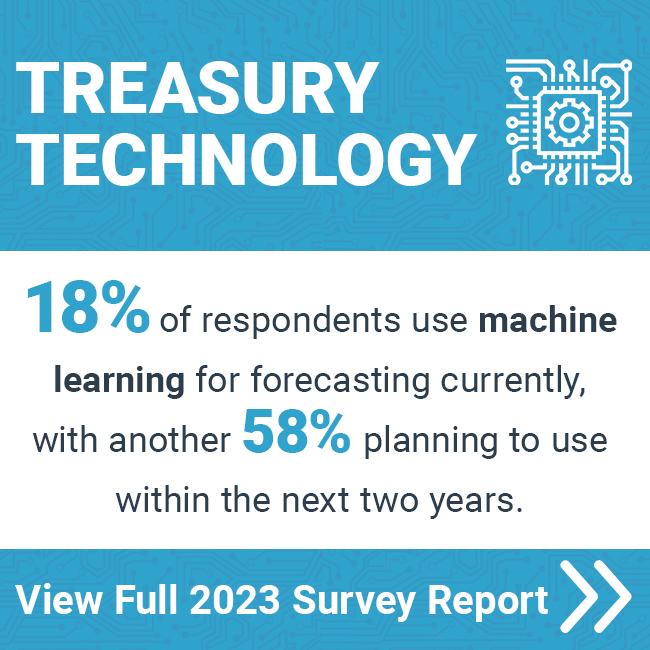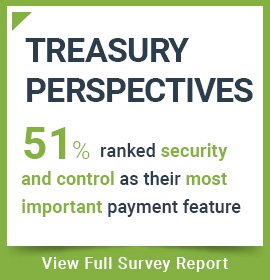

Global Crisis Monitor:
Insights from the First Four Weeks
A crisis is also a classroom in some respects. No one knows this better than treasury professionals, who, as managers of risk, in some ways spend their whole careers preparing for and watching for events where risks become reality in unexpected ways – events such as 9/11, the financial crisis, and the COVID-19 pandemic. When these events occur, they know it’s time to buckle down and not only handle the issues, but also learn from them.
In order to help treasury and finance most effectively and rapidly learn from the COVID-19 disruption, the Treasury Coalition formed to develop and distribute the Global Crisis Monitor, a weekly survey tracking the impact and response to COVID-19 amongst the treasury and finance professions. The Coalition is a group of consulting firms, solution providers, and financial institutions all of whom serve the treasury industry and banded together, laying aside their competition, to better the industry in the midst of crisis.
With the first four weeks of results in from the Global Crisis Monitor, certain trends and areas of particular concern have made themselves clear. This post will summarize the most notable results thus far.
Organizational and Headquarter Country Responses:
Consistently Positive
Respondents were asked to quantify the change in their views over the prior week regarding their own organization’s response to the crisis and regarding their headquarter country’s response. Every week so far, respondents have indicated that their view improved in the previous week, showing a consistent upward trend.

This graph shows the average response. A response of ‘5’ indicates no change in view from the prior week, whereas everything above indicates a positive change, and everything below indicates a drop. Note that a less positive response than in the previous week (a drop in the arrow) is not the same as a negative response. For example, on week 4, the average answer for organizational response was not as positive as in prior weeks (thus the downward arrow), but it is still above the neutral 5, so it’s a positive change in sentiment overall from the prior week.
Financial Concerns
Despite the positive-trending sentiment towards the handling of the crisis on both the national and the organizational level, respondents showed extreme concern regarding certain financial vitals in the present and for the future.
Current Concerns
Accounts Receivable has consistently topped the list of concerns each week of the Monitor, finishing the first four weeks with ten times as many negative responses as positive. We assume that this negativity reflects two aspects of the situation. First, the economic slowdown due to the shutdown and other mitigation factors in play. Second, organizations conserving cash by slowing down the payment process. This has continued to consistently worsen over the prior week. Concerns regarding Accounts Payable have mounted as well over the third and fourth weeks (the question was added in the third week), as more than 30% and then 40% of organizations are paying more slowly than has been their historical norm. We will continue to monitor this moving forward to see when these worsen or improve.
On the positive side, despite most other debt and liquidity measurements taking a negative showing the majority of weeks, central bank actions to provide liquidity have seen consistent, substantially positive sentiments from respondents. It’s reassuring to see that, while factors out of the control of governing bodies and the business world are creating a highly challenging situation, most professionals have a relatively high level of confidence in the effectiveness of the actions and measured responses that reside within organizational and governmental control, as shown both in the previous section with HQ country and company response and in this section with the positive attitudes towards central bank actions.
The Future of the Economy
Responses to questions about the economic outlook over time have resulted in an interesting set of statistics. The expectation of time until financial normalcy is reestablished has consistently shifted further and further away by a total of three months since the survey’s beginning. The most recent set of responses yielded a median of 9 months until normalcy, pushing the estimate into 2021. Notably, however, a significant minority of respondents indicated over a year until financial normalcy.
A separate set of questions asked respondents to rate their sentiments on the financial outlook for particular timeframes, with one question asking what they anticipated in three months, and another for 12 months. Thus far, the 3-month outlook has been substantially negative, and the 12-month outlook more neutral. Both are trending more positive as time goes by, however, with the median response for the 12-month outlook crossing the halfway mark into positive territory during the fourth week.
When we combine these two sets of responses, we can find an expected inflection point for when the economic outlook should shift from negative to positive. As of week 4, this inflection point sits at approximately 10 months, one month beyond the 9-month median response to the question regarding the return to financial normalcy.
Health, Family & Community
Another vein of timeline and sentiment questions gauged treasury’s expectations and level of concern regarding COVID-19’s impact on health and on their families and communities.
Week-over-week sentiment changes in outlook for community and family, while remaining relatively close to the neutral mark, trended slightly negative the first three weeks. In the fourth week, however, it rose to a slightly positive change. We will continue to watch this, hoping it increases in positivity over time.
The timeline for the virus, as estimated by treasury and finance professionals, is seeing results that are in some ways improving, in some ways deteriorating. Respondents answered two questions regarding the virus timeline each week. One question asked when they expected to see the inflection point of the virus, and the other asked when they expected to see the end of the virus as a significant health issue.
For each, the median response is very slowly moving closer. The inflection point of the virus is now expected within a month after starting at around two months, and the end of significant health issue estimate has landed around five months (placing it around mid-September) after fluctuating mostly closer to six months.
The complicating factor here is that we are moving forward in time faster than the estimates are moving closer. For a truly consistent estimate, we would have expected the median answers to move closer by a week with each survey period, and so far they have moved closer, but much more slowly. Ultimately, it seems that respondents originally hoped to see a resolution sooner, but we are seeing progress, even if more slowly than anticipated.

Top-of-Mind Miscellaneous Issues
Each week, the survey tries to identify the miscellaneous issue of top concern to respondents. This is gauged by a variety of questions, including forced ranking, free form, and select all that apply formats. The top issues have followed a logical progression while offering some valuable, timely insights.
The survey’s beginning week ran March 18-24, when many companies in the United States were in the process of moving employees home. Business Continuity Plans – their completeness, especially – were top of mind this week, as companies were rather abruptly faced with shifting processes off-site without significantly interrupting operations.
By the following week, most companies had established remote work, and the concern that arose next was deepening the bench strength in case of multiple employees being out due to illness (whether becoming ill themselves or needing to care for a sick family member). As a solution to this concern, cross-training came up as an unexpected area of concentration for many firms, which proved helpful for firms who had not yet considered this.
In the third week, which for many firms was at least the third week of remote work, WFH (work-from-home) issues finally became the top concern. Presumably, it had gone on long enough that management and technical issues were arising.
Finally, in the fourth week of the Monitor, concerns shifted from current WFH issues to wondering how long it would continue, with respondents identifying the length of the lockdowns as a top concern. After about a month of WFH for most, finance professionals seemed to be looking for the light at the end of the quarantine tunnel and showed curiosity about the logistics of reopening the economy.
Looking Forward
We’re excited to see how trends continue and shift as we move through the crisis and eventually reach a resolution. Check back as time goes by, as we will continue to intermittently post the top insights we’re learning from our respondents. If you find these insights valuable and are a treasury or finance professional, please participate in the survey each week (it takes 5 minutes) and spread the word. Visit the Treasury Coalition website for more detailed results made available each week via a written report and a brief podcast summary.






